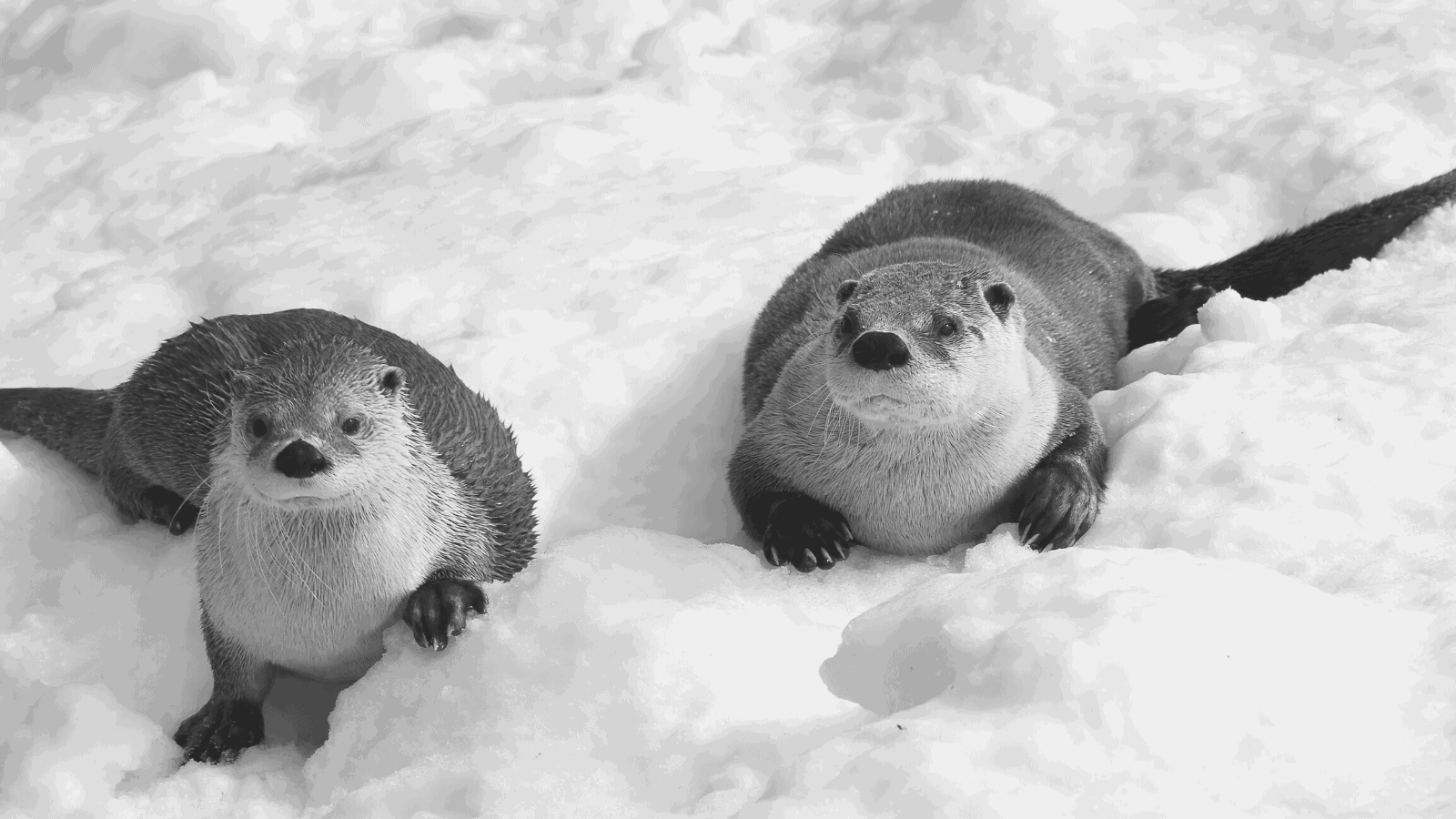The size of the world’s sea otter population, changing because of warming oceans, may accelerate climate change, according to scientists. Limestone reefs that have been a part of Alaskan kelp forests for centuries have started to disappear.
According to an article shared on September 10, 2o20 in Science Daily, the authors believe that predator loss and climate change contribute to the reef destruction.
The research was performed by Douglas Rasher, a senior research scientist at Bigelow Laboratory for Ocean Sciences. He led the team alongside coauthors Jim Estes from UC Santa Cruz and Bob Steneck from the University of Maine.
“We discovered that massive limestone reefs built by algae underpin the Aleutian Islands’ kelp forest ecosystem,” said Rasher. “However, these long-lived reefs are now disappearing before our eyes, and we’re looking at a collapse likely on the order of decades rather than centuries.”
How sea otters contribute to this complex ecosystem
The coral-like reefs, formed by the red alga Clathromorphum neostriatum, have started to disappear due to sea urchins. After the urchins’ prime predator, the Aleutian sea otter became nearly extinct in the 1990s. Sea urchin populations increased dramatically. Without the sea otters keeping the urchin population controlled, they have begun to ground down the kelp forests. Now, scientists have observed that the coralline algae that form the reef is disappearing as well.
How sea otters impact the sea urchin populations
The red alga Clathromorphum produces a limestone protective skeleton that wards off predators. It has formed a reef teeming with diverse sea life over hundreds of years. However, now that kelp is quickly disappearing, urchins have begun to make their way through the alga’s hard shell to eat it. Climate change has greatly contributed to this occurrence and the decline in the sea otter population.“Ocean warming and acidification are making it difficult for calcifying organisms to produce their shells, or in this case, the alga’s protective skeleton,” said Rasher. “This critical species has now become highly vulnerable to urchin grazing – right as urchin abundance is peaking. It’s a devastating combination.”
Scientists believe the huge reefs formed by the algae have played a crucial role in the Aleutian Islands’ marine ecosystem. Based on their age and size, they believe that they supported past increases in urchin populations. During the fur trading era of the 1700s and 1800s, sea otters were hunted almost to extinction. As a result, the sea urchin population rose dramatically, but the reefs remained virtually intact.
Rasher further explains:
“During the fur trade, Clathromorphum persisted through centuries where urchins presumably abounded. However, the situation has drastically changed this time around. Our research shows that sea urchin grazing has become much more lethal in recent years due to the emergent effects of climate change.”
Because of this, the algae adds bands of growth to its calcified skeleton each year. These bands show whether sea urchin grazing happened that year or not. By looking at these polished samples under a microscope, the team discovered that they could study the forest ecosystem’s history. This showed them that urchin grazing ebbed and flowed with the cycles of sea otter populations rising and falling. It also revealed that grazing rates had increased exponentially in recent years due to rising water temperatures.
The team also did a controlled study with live Clathromorphum and urchins in a laboratory that mirrored preindustrial and current water conditions. They also tested them in conditions expected at the end of this century. After three months, the team placed the algae and urchins together to assess the urchin die-offs due to water temperature and acidity. They found that lethal urchin grazing occurred at rates of 35-60 percent greater than preindustrial times. Under future water conditions, that rate grew by 20-40 percent.
Study outcome
This data shows that the reef decline due to urchins eating away at the alga’s defense systems is directly caused by climate change. The warming oceans and loss of diversity in the ecosystem are pushing it to a critical tipping point.
“It’s well documented that humans are changing Earth’s ecosystems by altering the climate and by removing large predators, but scientists rarely study those processes together,” Rasher said. “If we had only studied the effects of climate change on Clathromorphum in the laboratory, we would have arrived at very different conclusions about the vulnerability and future of this species. Our study shows that we must view climate change through an ecological lens, or we’re likely to face many surprises in the coming years.”
How to reverse this trend
Despite the alarming discovery, the study shows how we can stop the reef destruction by addressing climate change. Of course, we must urgently address the greenhouse gas levels in our environment. This requires the effort and coordination of governments and companies worldwide. Restoring the sea otter population in Alaska can help the region to revitalize the ecosystem and slow down reef erosion.
“This is exciting because it suggests that resource managers have opportunities to manage large predators in ways that can help slow the rate with which climate change is deteriorating our natural ecosystems,” Rasher said. “In the case of Aleutian kelp forests, restoring sea otter populations would bring many ecological benefits, and would also buy us time to get our act together on curbing carbon emissions, before this foundational reef builder is lost.”
Despite the threat of climate change, it helps to know that we can do something to mitigate its effects. If we do not curb our reliance on fossil fuels, however, the resulting ocean acidification could lead to mass extinctions.
How ocean acidification could cause mass extinctions
Ocean acidification occurs due to an increase in the hydrogen ions created from the absorption of Co2. This chemical reaction changes the pH balance of the water, causing acidity to rise. It also decreases the carbonate ions and calcium carbonate saturation levels. Furthermore, the ocean absorbs less oxygen from the environment because of the increase in Co2. This imbalance makes it very difficult for marine life to survive, as they need adequate oxygen levels.
Researchers and scientists noted in 2012 that the surface water up to 4 meters down had already warmed by .13 degrees per decade over the last century. According to a groundbreaking report in 2012 by Geophysical Research Letters, the ocean absorbs heat much deeper, up to 700 feet down.
What happens due to ocean warming?
- Calcium carbonate allows much marine life, including coral, plankton, oysters, and crabs, to produce and maintain their shells and skeletons. Researchers have noted a decline in coral production, oysters, and pteropods.
- Coral starts to bleach and die because of higher Co2 levels. Coral allows many types of marine life to thrive and helps maintain coastal landscapes. As they continue to die off, coastlines will start to disappear. This change will cause a huge die-off of fish and other marine animals.
- FDA issued a report in 2012 stating that marine and freshwater fisheries provide 4.3 billion people with 15% of their dietary protein. The warming of our oceans will lead to massive declines in fish populations and make the surviving ones unhealthy for humans to eat. This shift could pose a huge threat to food security for billions of people.
- Estimated financial losses from decreased fisheries expect to range from 10s to 100s of million dollars.
- Coastal regions will likely see an increase in the frequency and severity of hurricanes, flooding, and other storms. This trend could displace millions of people worldwide.
- Melting Antarctic ice shelves, as well as others in the Arctic, are contributing to rising sea levels. The oceans warm up faster in the Southern Hemisphere, and along with ocean acidification, this could devastate coastal areas.
- The IPCC report in 2019 shows the warming trend continuing in recent years. The report states some of the effects of climate change will still occur even if we don’t surpass the 2C warming threshold.
Figuring out how to filter carbon dioxide out of the ocean and tackling our greenhouse gas problem should be a top priority. Although we might not be able to reverse climate change completely, we can at least stall some of the devastating effects. For future generations, we must act as stewards to our planet and its inhabitants. After all, there is no Planet B (yet).
Final thoughts on how sea otter decline contributes to climate change
You wouldn’t think sea otters would affect the climate very much, but their existence keeps other parts of the ecosystem in check. The sea otter preys on urchins in Alaska, which allows the kelp forests to thrive as well. With the decline of the sea otter, the urchin population has skyrocketed, leading to diminishing kelp forests. Urchins feed on the algae in the reefs, which is causing a threat to the entire ecosystem.
Ocean warming makes it difficult for algae to produce its protective skeleton, making it vulnerable to urchin grazing. However, scientists believe that by restoring the sea otter population, the ecosystem will return to equilibrium. The ocean warming trend may continue, but we can still do our best to protect the ecosystems of the ocean.



















